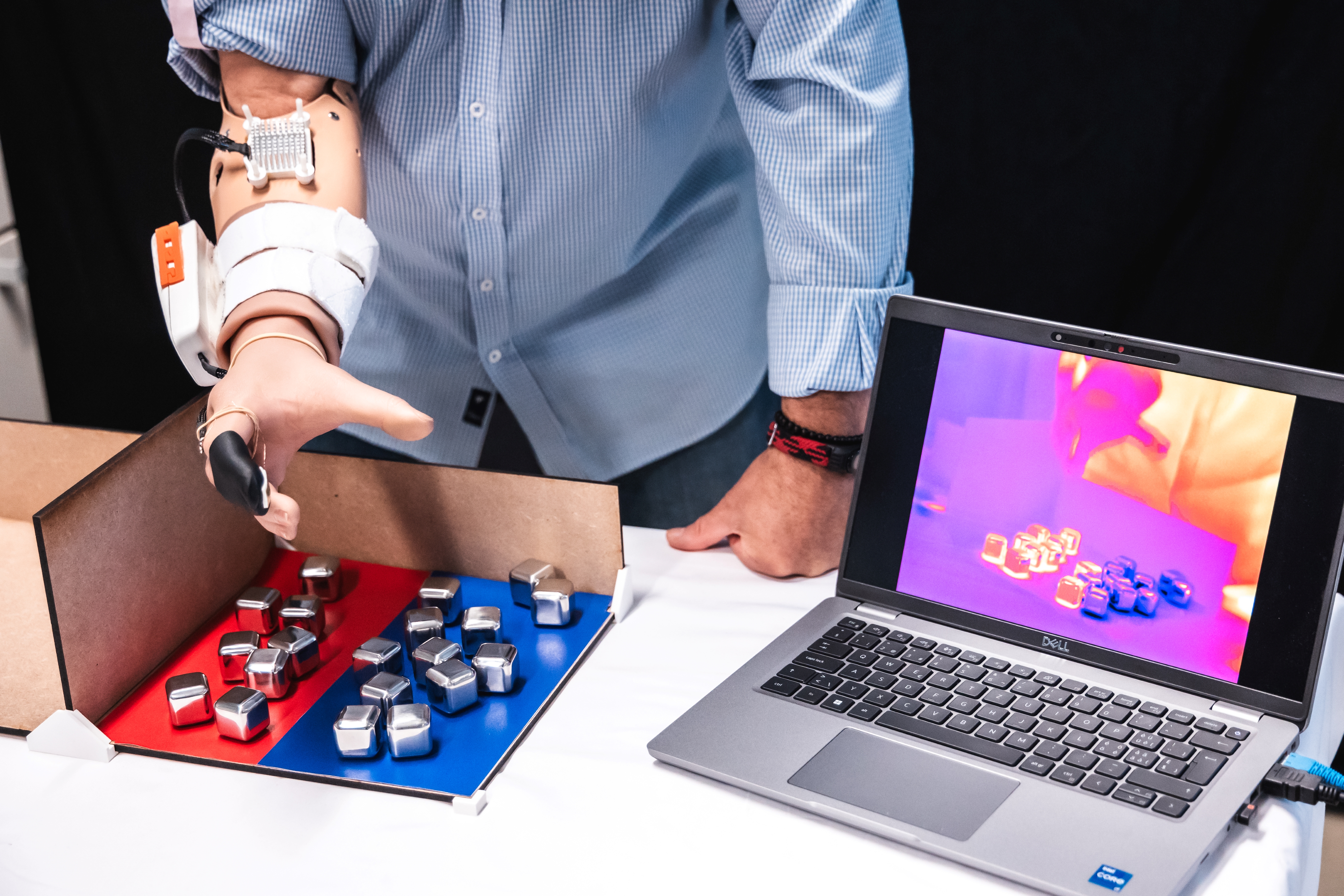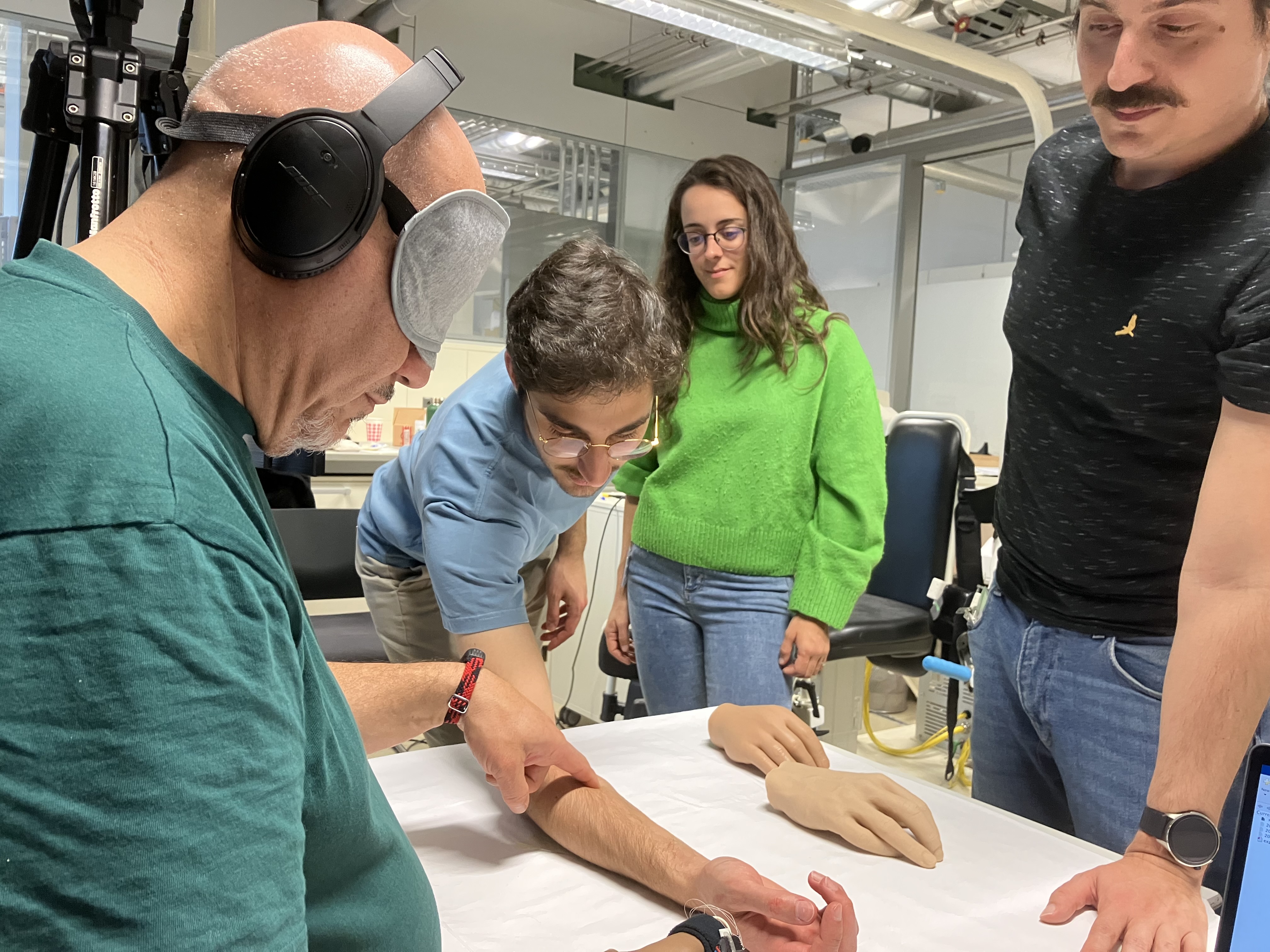For the first time, according to the team of scientists behind the innovation, natural temperature sensation has been incorporated into a functioning prosthetic limb. The device, called MiniTouch, can be integrated into any commercial prosthesis without the user having to undergo surgery, and restores a more human-like touch that many would consider to be permanently lost after amputation.
For test user 57-year-old Fabrizio, whose hand was amputated at the wrist more than three decades ago, his first experience with the new device was powerful.
“When one of the researchers placed the sensor on his own body, I could feel the warmth of another person with my phantom hand. [I]t was a very strong emotion for me, it was like reactivating a connection with someone,” Fabrizio said in a statement.
But there are practical benefits too. Our brains rely on sensory feedback constantly as we navigate our environment. Feeling temperature is an important part of our sense of touch, but according to co-senior study author Silvestro Micera, it’s also “one of the last frontiers to restoring sensation to robotic hands.”
Micera added in another statement, “For the first time, we’re really close to restoring the full palette of sensations to amputees.”
In tests, Fabrizio was able to use the MiniTouch to sort objects of different temperatures. When presented with three identical bottles containing cold, cool, and hot water, respectively, the MiniTouch allowed him to distinguish between them with 100 percent accuracy, compared to just 33 percent without the device. Similarly impressive results were seen when Fabrizio was tasked with sorting metal cubes of different temperatures.

Thermal imaging shows the different temperatures of the cubes that Fabrizio was asked to sort.
Image credit: EPFL Caillet
The MiniTouch works by transmitting thermal information that it senses from the fingertips of the prosthesis to the nerves in the amputee’s residual arm. Because it’s compatible with commercial prostheses, there’s no need to produce a whole new specialized device for users to start reaping the benefits.
When Fabrizio was blindfolded and asked to differentiate between human and prosthetic arms, the MiniTouch improved his accuracy from 60 to 80 percent. But it was still not perfect, and the researchers think this is because the sensation of things like skin softness and texture remained limited.

Fabrizio was blindfolded and asked to tell the difference between a human arm and a prosthesis.
Image credit: Med, Muheim and Iberite et al
“When you reach a certain level of dexterity with robotic hands, you really need to have sensory feedback to really be able to use the robotic hand to its full potential,” said co-senior author Solaiman Shokur.
“Our goal now is to develop a multimodal system that integrates touch, proprioception, and temperature sensations. With that type of system, people will be able to tell you ‘this is soft and hot,’ or ‘this is hard and cold.”
After this testing, which followed promising earlier results, the scientists say their device is ready to go from a technical perspective. More safety tests and other improvements will be needed before it can be made available for clinical use, however. In the future, we could see the MiniTouch combining inputs from multiple points on a prosthetic limb, such as allowing people to feel touch on the back of their hand.
Prosthetic technology dates back a surprisingly long way, but it is improving all the time – even our animal friends can get in on the action. The team hopes the MiniTouch will provide a neat solution to one of the persistent challenges with these kinds of devices.
“This study paves the way for more natural hand prostheses that restore a full range of sensations, offering amputees a richer and more natural perception of the tactile world,” Micera concluded.
The study is published in the journal Med.
Source Link: New Temperature-Sensing Prosthetic Limb Helps Users Feel A Human Touch